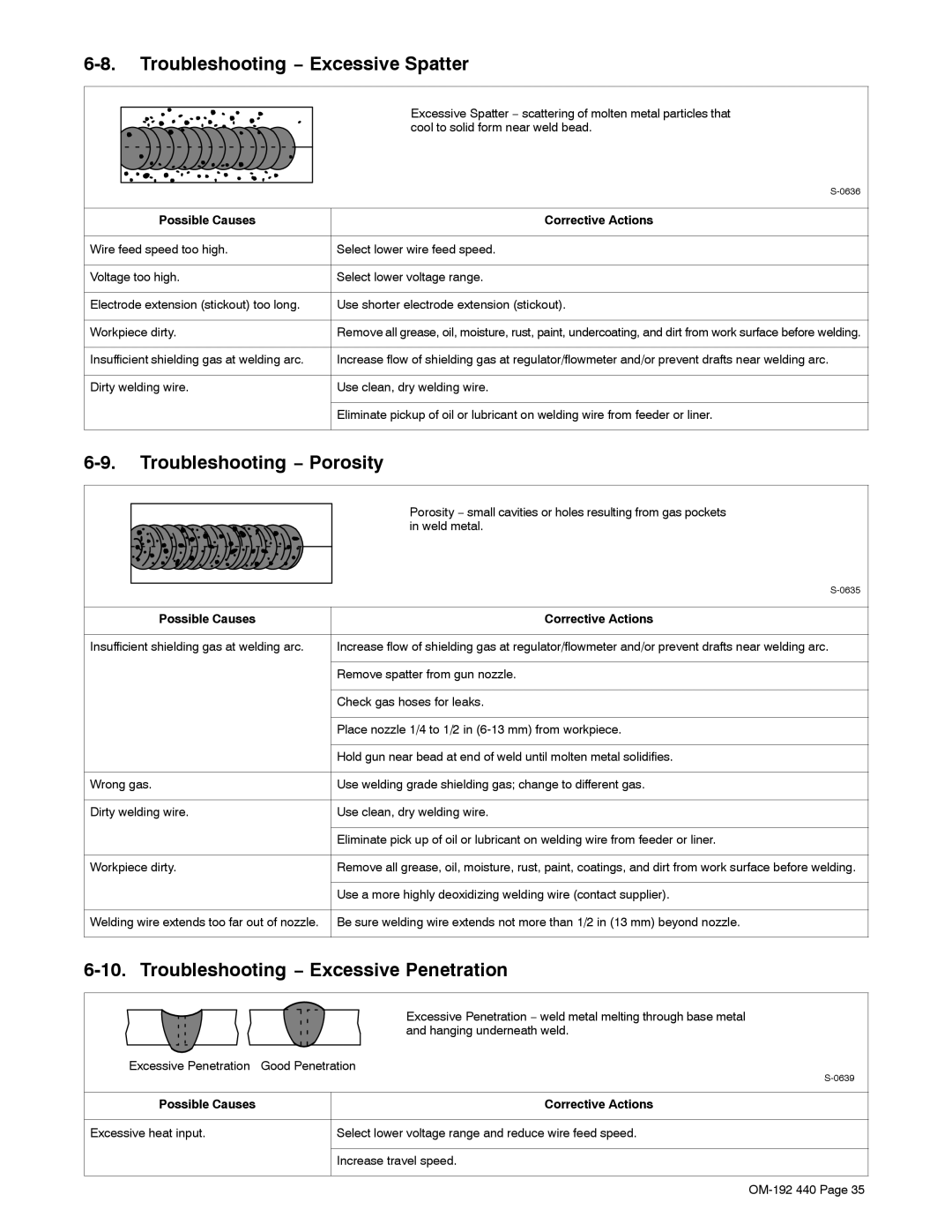
Troubleshooting − Excessive Spatter | ||
|
| Excessive Spatter − scattering of molten metal particles that |
|
| cool to solid form near weld bead. |
|
| |
| Possible Causes | Corrective Actions |
Wire feed speed too high. | Select lower wire feed speed. | |
Voltage too high. | Select lower voltage range. | |
Electrode extension (stickout) too long. | Use shorter electrode extension (stickout). | |
Workpiece dirty. | Remove all grease, oil, moisture, rust, paint, undercoating, and dirt from work surface before welding. | |
Insufficient shielding gas at welding arc. | Increase flow of shielding gas at regulator/flowmeter and/or prevent drafts near welding arc. | |
Dirty welding wire. | Use clean, dry welding wire. | |
|
| Eliminate pickup of oil or lubricant on welding wire from feeder or liner. |
Troubleshooting − Porosity | ||
|
| Porosity − small cavities or holes resulting from gas pockets |
|
| in weld metal. |
|
| |
| Possible Causes | Corrective Actions |
Insufficient shielding gas at welding arc. | Increase flow of shielding gas at regulator/flowmeter and/or prevent drafts near welding arc. | |
|
| Remove spatter from gun nozzle. |
|
| Check gas hoses for leaks. |
|
| Place nozzle 1/4 to 1/2 in |
|
| Hold gun near bead at end of weld until molten metal solidifies. |
Wrong gas. | Use welding grade shielding gas; change to different gas. | |
Dirty welding wire. | Use clean, dry welding wire. | |
|
| Eliminate pick up of oil or lubricant on welding wire from feeder or liner. |
Workpiece dirty. | Remove all grease, oil, moisture, rust, paint, coatings, and dirt from work surface before welding. | |
|
| Use a more highly deoxidizing welding wire (contact supplier). |
Welding wire extends too far out of nozzle. | Be sure welding wire extends not more than 1/2 in (13 mm) beyond nozzle. | |
Troubleshooting − Excessive Penetration | ||
|
| Excessive Penetration − weld metal melting through base metal |
|
| and hanging underneath weld. |
| Excessive Penetration Good Penetration | |
|
| |
| Possible Causes | Corrective Actions |
Excessive heat input. | Select lower voltage range and reduce wire feed speed. | |
|
| Increase travel speed. |
|
| |
